The Archaeological Zones Along the Tren Maya
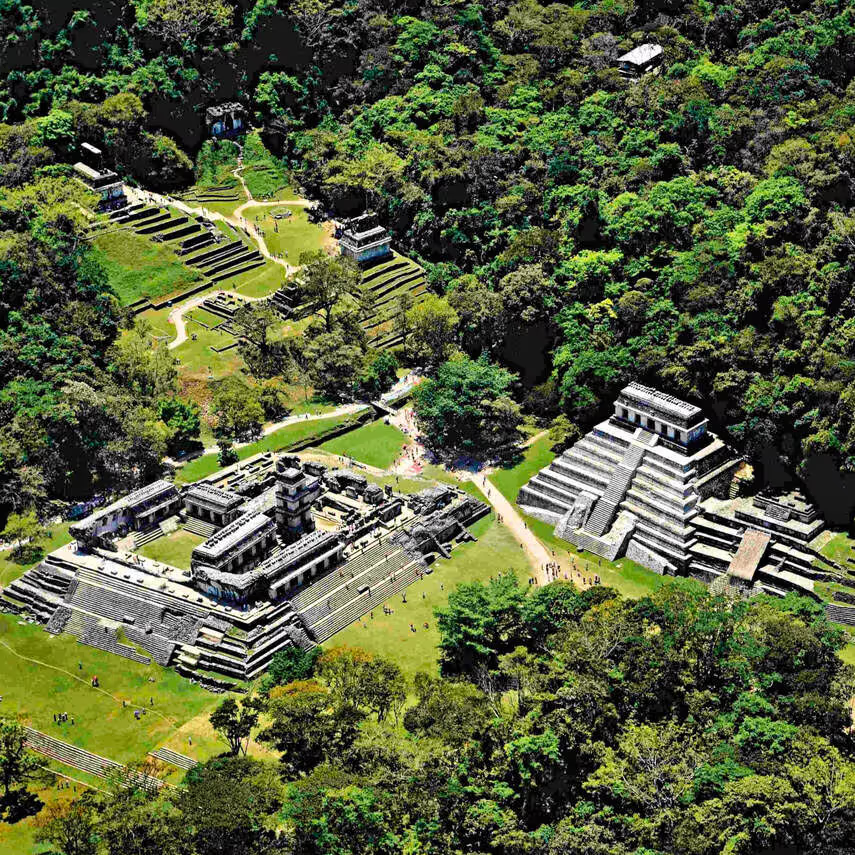
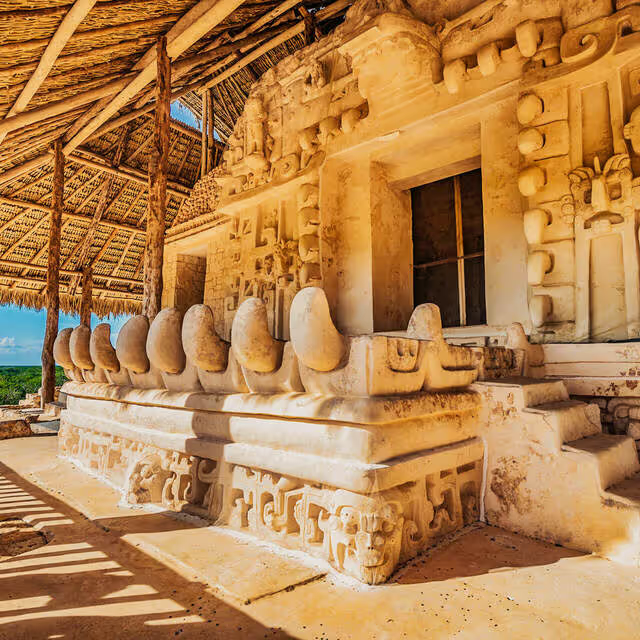
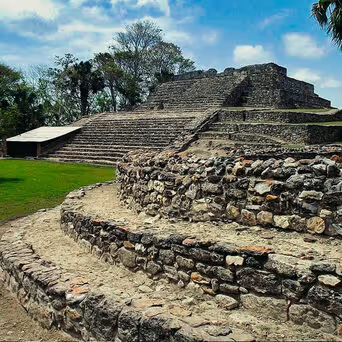
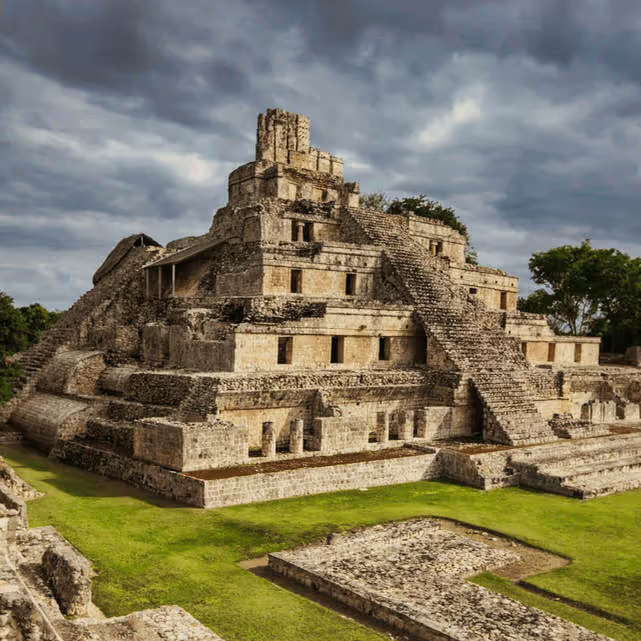


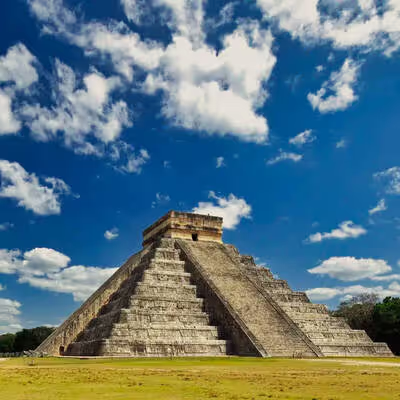
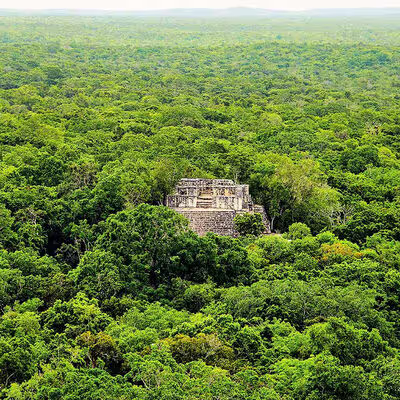
The Tren Maya is not just a means of transportation for moving from one place to another; it is also a way to explore various Maya archaeological sites.
Palenque
Located in Chiapas, Palenque is one of the most important Maya cities of the Classic period (250-900 AD). It is renowned for its refined architecture and hieroglyphic inscriptions. The Temple of the Inscriptions houses the tomb of King Pakal the Great, whose jade mask is one of the most iconic pieces of Maya art. Its temples and palaces feature a unique architectural style with vaulted roofs and elaborate sculptures. Surrounded by jungle, Palenque offers a breathtaking landscape and a testament to the artistic, political, and religious achievements of the Maya civilization at its peak.
Ek’ Balam
Located in Yucatán, Ek’ Balam means "Black Jaguar" in Maya and was a major political center between the 7th and 11th centuries. Its most impressive structure is the Acropolis, a massive multi-level building housing a royal tomb decorated with well-preserved stucco figures. Ek’ Balam stands out for its defensive walls and detailed artwork, depicting mythological figures. Unlike other Maya sites, many of its decorations still retain traces of paint. Its location in the jungle makes it a fascinating archaeological site, less crowded than other major Maya cities, offering visitors a unique glimpse into ancient Maya culture.
El Tigre
Located in Campeche, El Tigre, also known as Itzamkanac, was a major coastal trade center between the Classic and Postclassic periods. It is believed to be the site where the last Aztec emperor, Cuauhtémoc, was executed by the Spanish in 1525. Its structures show a strong influence from Central Mexican architecture, suggesting contact with other Mesoamerican regions. The site features large pyramidal platforms and plazas, reflecting its political and economic significance. Its strategic coastal position facilitated the trade of cacao, salt, and ceramics, consolidating its role as a key hub in the Maya trade networks.
Edzná
Edzná, in Campeche, was a Maya city with an advanced hydraulic system that allowed its development between 600 and 900 AD. Its most impressive structure is the Five-Story Pyramid, one of the tallest in the Maya region. The city’s acropolis and ceremonial plazas highlight its importance as a political and religious center. Edzná exhibits architectural influences from various regions, indicating strong interactions with other Maya cities. Its system of canals and water reservoirs enabled the city to flourish in an area with scarce natural water sources, demonstrating the Maya’s sophisticated engineering and water management techniques.
Xcalumkin
Located in Campeche, Xcalumkin was an administrative and residential center between the 8th and 10th centuries. It is known for its numerous hieroglyphic inscriptions that document its history and connections with other cities. Its architecture belongs to the Puuc style, characterized by intricate stone mosaics and geometric friezes. Though smaller than other Maya cities, Xcalumkin provides insight into elite life and political organization. Its strategic location along a trade route suggests it played a key role in the distribution of goods across the region, making it an important yet lesser-known part of the Maya world.
Tulum
Tulum, in Quintana Roo, is one of the last Maya xx built before the Spanish arrival. Perched on a cliff overlooking the Caribbean, its defensive walls suggest it was a key commercial and military center during the Postclassic period (1200-1500 AD). Its most iconic structure, the Temple of the Descending God, features a figure associated with fertility and water. Tulum was a major trade hub, where goods like jade, obsidian, and quetzal feathers were exchanged. Its stunning coastal landscape and historical significance make it one of Mexico’s most visited archaeological sites, offering a unique blend of history and nature.
Chichén Itzá
Chichén Itzá, in Yucatán, was one of the most influential Maya cities during the Postclassic period. Its most famous structure, the Temple of Kukulcán, is a stepped pyramid aligned with the equinoxes, where the illusion of a "feathered serpent" descending the stairs can be seen. The Great Ball Court, the largest in Mesoamerica, and the Sacred Cenote, used for rituals, reflect the site’s religious and cultural complexity. Chichén Itzá’s architecture combines Maya and Toltec influences, demonstrating cultural exchange with other civilizations. As a UNESCO World Heritage Site, it remains one of the most iconic archaeological wonders in the world.
Calakmul
Located in the jungles of Campeche, Calakmul was one of the most powerful cities of the Classic period and a fierce rival of Tikal in Guatemala. Its vast territory encompassed dozens of subordinate settlements. Over 120 stelae have been found, documenting the city’s dynastic history and conflicts with other Maya polities. Its enormous pyramids offer breathtaking views of the rainforest. Hidden for centuries due to its remote location, Calakmul is now a UNESCO World Heritage Site and a testament to the grandeur of the ancient Maya. Situated in the Calakmul Biosphere Reserve, it is also a site of ecological significance.